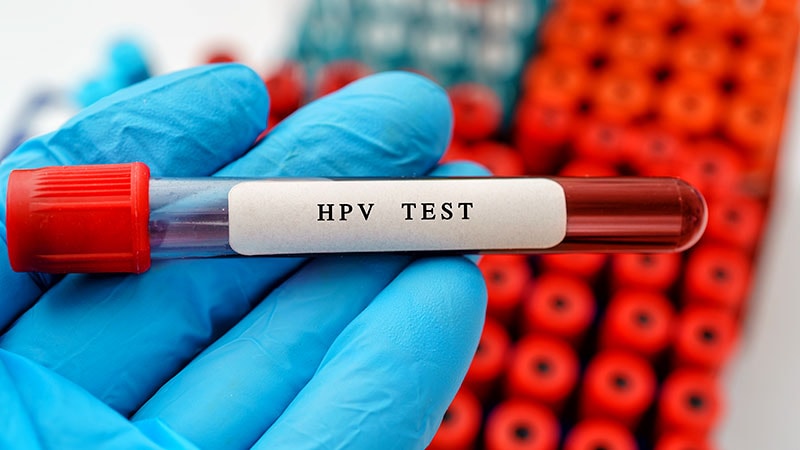Addressing Patients' Anxieties with Positive HPV Test Results
Core Concepts
Providing accurate information to patients with positive HPV tests is crucial to alleviate anxiety and ensure proper care.
Abstract
The content discusses the anxiety patients face upon receiving a positive human papillomavirus (HPV) test result and the importance of healthcare professionals providing correct information to reassure them. It covers the risks associated with HPV, the need for monitoring, partner protection, and treatment options. The article emphasizes the significance of accurate responses to patients' questions to alleviate their worries and ensure proper care.
Key Highlights:
Patients often turn to the internet after a positive HPV test, leading to increased anxiety.
Most patients with a positive HPV test do not have severe cervical lesions, emphasizing the need for reassurance.
Monitoring and exploration are essential for patients with high-risk HPV to detect potential lesions.
Patients treated for cervical lesions have a higher risk of developing invasive cancers and require lifelong monitoring.
HPV infection is common, with most individuals infected between ages 15 and 30.
The risk of HPV transmission to partners is high, and protection measures are limited.
Treatments focus on managing cervical lesions, while viral clearance remains a challenge.
Vaccination post-treatment may reduce the risk of lesion recurrence but lacks official recommendations.
HPV Positive Test: How to Address Patients' Anxieties
Stats
Among women with a positive HPV test, about 7% have a high-grade CIN3 lesion or higher on the cervix.
After 11 years, 20-30% of patients with persistent HPV develop a high-grade lesion on the cervix.
15% of couples have the same virus present on the penis or vagina.
Quotes
"Not everyone is equipped to answer these four questions. However, it is extremely important that healthcare professionals provide correct answers to patients so that they stop worrying." - Jean-Louis Mergui
"High-risk HPV does not mean there is a lesion; it means there is a risk of developing a lesion on the cervix one day. That's why these patients need to be monitored and explored." - Jean-Louis Mergui
Key Insights Distilled From
by Aude Lecrubi... at www.medscape.com 02-09-2024
https://www.medscape.com/viewarticle/hpv-positive-test-how-address-patients-anxieties-2024a10002wm
Deeper Inquiries
How can healthcare professionals better educate patients about HPV risks and prevention measures?
Healthcare professionals can improve patient education by providing accurate and up-to-date information about HPV risks and prevention measures. This includes explaining that HPV infection is common and often clears up on its own within a couple of years. Professionals should emphasize the importance of regular screenings, such as Pap smears and HPV tests, to monitor for any potential cervical lesions. Additionally, discussing the benefits of lifestyle factors like quitting smoking and condom use in improving viral clearance can empower patients to take control of their health. Offering resources for further reading or support groups can also help patients better understand and cope with their diagnosis.
What are the potential drawbacks of over-reassuring patients with positive HPV tests?
While it is essential to provide reassurance to patients with positive HPV tests, over-reassuring them can have potential drawbacks. One drawback is the risk of downplaying the importance of regular screenings and follow-up appointments. If patients feel overly reassured, they may become complacent about monitoring their condition, leading to missed opportunities for early detection of cervical lesions. Over-reassurance may also create a false sense of security, causing patients to neglect preventive measures like quitting smoking or using condoms. It is crucial for healthcare professionals to strike a balance between providing reassurance and emphasizing the importance of ongoing monitoring and prevention strategies.
How can societal attitudes towards HPV and sexual health be improved to reduce stigma and anxiety?
To reduce stigma and anxiety surrounding HPV and sexual health, societal attitudes need to shift towards open communication, education, and destigmatization. Public health campaigns can play a significant role in raising awareness about HPV, its prevalence, and the importance of regular screenings. Normalizing discussions about sexual health and HPV can help reduce the shame and stigma associated with the virus. Providing accurate information through schools, healthcare settings, and media platforms can empower individuals to make informed decisions about their sexual health. Encouraging open conversations between partners about HPV and regular testing can also help reduce anxiety and promote a supportive environment for those affected by the virus. Ultimately, fostering a culture of understanding, empathy, and proactive healthcare can contribute to reducing stigma and anxiety related to HPV and sexual health.
0
More on Healthcare
